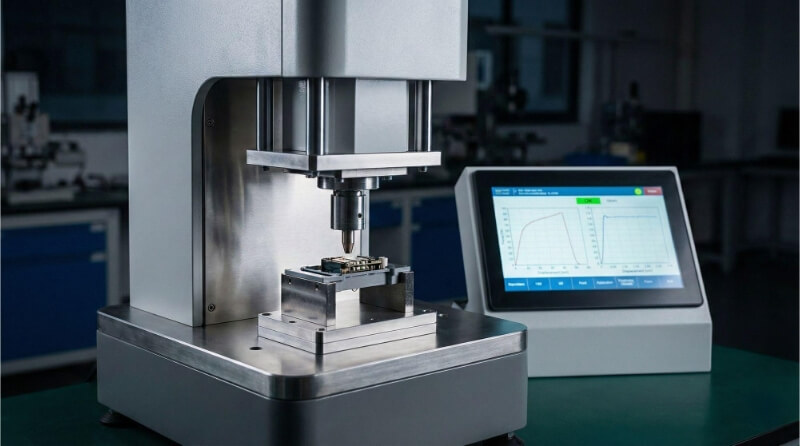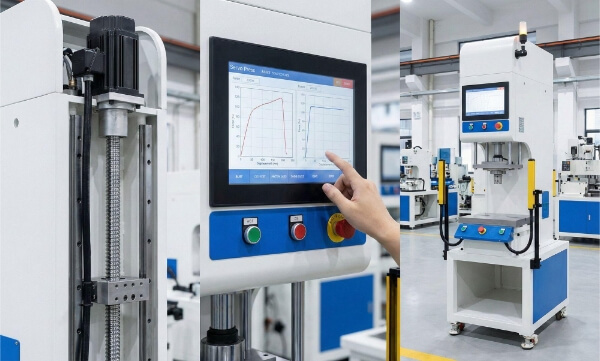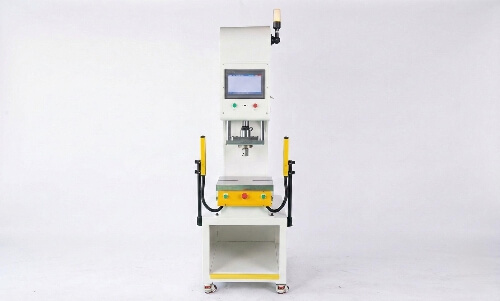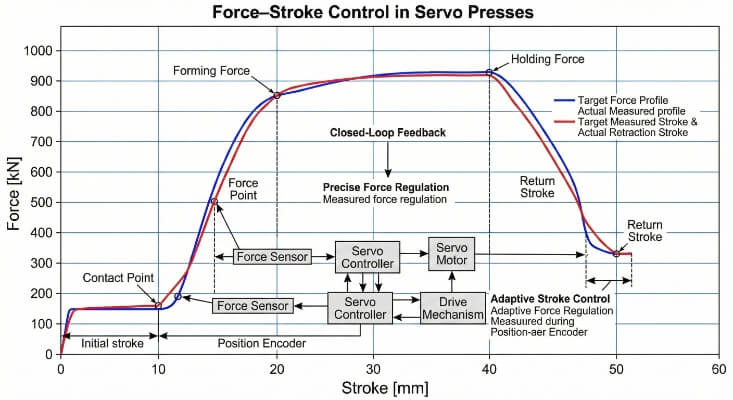الفولاذ الأوستنيتي المقاوم للصدأ هو نوع من الفولاذ المقاوم للصدأ معروف بمقاومته الممتازة للتآكل وقابليته الممتازة للتشكيل. يحتوي على الكروم والنيكل، مما يمنحه بنية بلورية فريدة من نوعها. هذه البنية تجعله غير مغناطيسي ومقاوم للغاية للصدأ وأشكال التآكل الأخرى. ونظراً لقوة تحمله وتعدد استخداماته، فإنه يستخدم على نطاق واسع في مختلف الصناعات.
دعونا نستكشف الميزات الهامة للفولاذ الأوستنيتي المقاوم للصدأ ولماذا قد يناسب احتياجات التصنيع الخاصة بك بشكل مثالي.
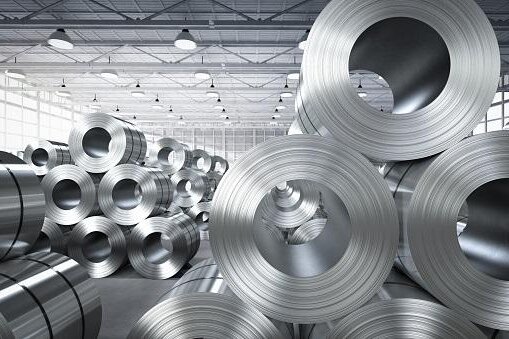
خواص الفولاذ المقاوم للصدأ الأوستنيتي
يتميز الفولاذ الأوستنيتي المقاوم للصدأ بخصائصه الفريدة، مما يجعله خيارًا مفضلاً للعديد من التطبيقات.
التركيب البلوري للفولاذ الأوستنيتي المقاوم للصدأ
يأتي اسم "الأوستنيتي" من تركيبته البلورية. يحتوي هذا الفولاذ على بنية بلورية مكعبة محورها الوجه، وهو ما يمنح المعدن خصائصه المميزة. وعلى عكس بعض الأنواع الأخرى من الفولاذ، تظل البنية مستقرة في درجة حرارة الغرفة.
قدرات مقاومة التآكل
تتمثل إحدى السمات الرئيسية للفولاذ الأوستنيتي المقاوم للصدأ في مقاومته الممتازة للتآكل. فهو يكوّن طبقة رقيقة غير مرئية من أكسيد الكروم على سطحه، مما يحمي المعدن من التآكل. وحتى إذا تعرض السطح للخدش، فإن هذه الطبقة الواقية سرعان ما تتصلح.
الخواص الميكانيكية: القوة والليونة
يوفر الفولاذ الأوستنيتي المقاوم للصدأ توازنًا جيدًا بين القوة والمرونة. فهو قوي بما يكفي للعديد من التطبيقات الإنشائية وقابل للسحب بما يكفي لتشكيله في أشكال معقدة. وهذا المزيج يجعله متعدد الاستخدامات لعمليات التصنيع المختلفة.
الخواص الحرارية: مقاومة الحرارة والتوصيل الحراري
يعمل هذا النوع من الفولاذ بشكل جيد في البيئات ذات درجات الحرارة العالية. فهو يحافظ على قوته ومقاومته للتآكل حتى عند تسخينه. إلا أنه يتميز بتوصيل حراري أقل مقارنةً بالمعادن الأخرى. يمكن أن تكون هذه الخاصية ميزة أو عيبًا، اعتمادًا على التطبيق.
الخصائص المغناطيسية للفولاذ الأوستنيتي المقاوم للصدأ
على عكس بعض الأنواع الأخرى من الفولاذ المقاوم للصدأ، فإن درجات الأوستنيتي غير مغناطيسية بسبب محتواها من النيكل. هذه الخصائص تجعل هذا الفولاذ مثاليًا للتطبيقات التي يكون فيها التداخل المغناطيسي مصدر قلق.
الأنواع الشائعة من الفولاذ الأوستنيتي المقاوم للصدأ
تأتي أنواع الفولاذ الأوستنيتي المقاوم للصدأ في درجات مختلفة، لكل منها تركيبة وخصائص فريدة. السلسلتان الرئيسيتان هما السلسلة 200 والسلسلة 300.
السلسلة 200
تشتهر السلسلة 200 بمحتواها المنخفض من النيكل. وقد طور المصنعون هذه الدرجات كبديل أكثر فعالية من حيث التكلفة للسلسلة 300. فهي تستبدل بعض النيكل بالمنجنيز والنيتروجين.
النوع 201 هو الرتبة الشائعة في هذه السلسلة. وهو يوفر قوة جيدة ومقاومة معتدلة للتآكل. وغالباً ما يوجد في الأجهزة المنزلية وزخارف السيارات.
النوع 202 هو درجة شائعة أخرى. ويتميز بمقاومة تآكل أفضل قليلاً من النوع 201، وكثيراً ما يستخدم في معدات تجهيز الأغذية والتطبيقات المعمارية.
السلسلة 300
السلسلة 300 هي المجموعة الأكثر استخدامًا من الفولاذ الأوستنيتي المقاوم للصدأ. تحتوي هذه الدرجات على مستويات أعلى من النيكل، مما يعزز مقاومتها للتآكل وقابليتها للتشكيل.
النوع 304، وغالباً ما يُطلق عليه "18/8" غير القابل للصدأ، هو النوع الأكثر شيوعاً. يحتوي على 181 تيرابايت 3 تيرابايت كروم و81 تيرابايت 3 تيرابايت نيكل. تُستخدم هذه الرتبة متعددة الاستخدامات في كل شيء من أحواض المطبخ إلى معدات المعالجة الكيميائية.
النوع 316 هو درجة شائعة أخرى. وهو يحتوي على الموليبدينوم، مما يحسن من مقاومته للتآكل الناتج عن التنقر. وغالباً ما يستخدم هذا النوع في البيئات البحرية والأجهزة الطبية.
النوعان 321 و347 هما النوعان المستقران. تحتوي على التيتانيوم أو النيوبيوم لمنع ترسيب الكربيد أثناء اللحام. وغالباً ما تستخدم هذه الرتب في التطبيقات ذات درجات الحرارة العالية.
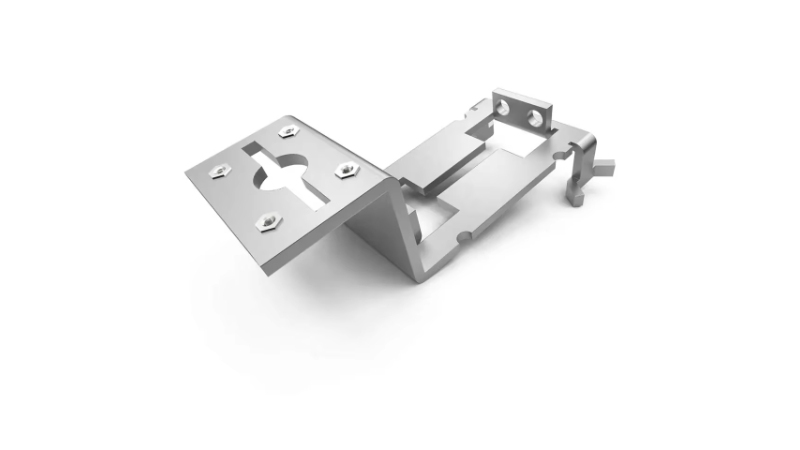
التركيب الكيميائي
تأتي الخصائص الفريدة للفولاذ الأوستنيتي المقاوم للصدأ من تركيبها الكيميائي، حيث يلعب كل عنصر دورًا محددًا في أداء السبيكة.
دور الكروم في الفولاذ المقاوم للصدأ الأوستنيتي
الكروم هو العنصر الأساسي في جميع أنواع الفولاذ المقاوم للصدأ، بما في ذلك درجات الفولاذ الأوستنيتي. فهو يشكّل طبقة رقيقة غير مرئية من أكسيد الكروم على سطح الفولاذ، مما يحمي المعدن من التآكل. يحتوي الفولاذ الأوستنيتي المقاوم للصدأ عادةً على 16% على الأقل من الكروم، وبعض الدرجات تحتوي على ما يصل إلى 26% لتعزيز مقاومة التآكل.
أهمية النيكل في بنية السبيكة
النيكل مهم للغاية في الفولاذ الأوستنيتي المقاوم للصدأ. فهو يعمل على استقرار بنية الأوستينيت في درجة حرارة الغرفة، مما يمنح الفولاذ خصائصه غير المغناطيسية. كما يحسّن النيكل من ليونة الفولاذ وصلابته. تحتوي معظم الدرجات الأوستنيتي على نيكل 8-10%، ولكن يمكن أن يحتوي بعضها على ما يصل إلى 35%.
المحتوى الكربوني وتأثيره على الفولاذ الأوستنيتي
عادةً ما يظل محتوى الكربون في الفولاذ الأوستنيتي المقاوم للصدأ منخفضًا، أقل من 0.08%. يمكن أن يؤدي ارتفاع الكربون إلى ترسيب الكربيد عند حدود الحبوب. هذه الظاهرة، المعروفة باسم التحسس، يمكن أن تقلل من مقاومة التآكل. تحتوي بعض الدرجات على محتوى أقل من الكربون (أقل من 0.03%) لمنع هذه المشكلة.
عناصر السبائك الإضافية: المنجنيز والموليبدينوم والتيتانيوم
وتضاف عناصر أخرى لتعزيز خصائص محددة. يمكن أن يحل المنجنيز محل النيكل جزئياً في بعض الدرجات ويحسن من ليونة السحب على الساخن. يعزز الموليبدينوم من مقاومة التنقر والتآكل الشقوق. يضاف التيتانيوم أو النيوبيوم إلى بعض الدرجات لمنع التحسس. وتسمى هذه العناصر بالمثبتات.
التصنيع والمعالجة
ويخضع الفولاذ الأوستنيتي المقاوم للصدأ لخطوات تصنيع ومعالجة مختلفة، والتي تشكل المادة في شكلها النهائي وتحسّن خصائصها.
طرق الإنتاج: الصهر والصب
يبدأ إنتاج الفولاذ الأوستنيتي المقاوم للصدأ بالصهر. ويستخدم المصنعون أفران القوس الكهربائي لصهر المواد الخام، ويتحكمون بعناية في التركيب خلال هذه المرحلة. وبعد الصهر، يتم تكرير الفولاذ المصهور لإزالة الشوائب. ثم يتم صب الفولاذ المكرر في أشكال مختلفة.
عمليات التشكيل على الساخن والبارد
يحدث التشكيل على الساخن عند درجات حرارة أعلى من نقطة إعادة بلورة الفولاذ. تسمح هذه العملية بإجراء تغييرات كبيرة في الشكل بقوة منخفضة نسبيًا. وتُستخدم لإنشاء أشكال هيكلية كبيرة وألواح سميكة. يحدث التشكيل على البارد في درجة حرارة الغرفة. وتُستخدم لصنع الصفائح والشرائط والأسلاك.
تصنيع الفولاذ المقاوم للصدأ الأوستنيتي
قد يكون التصنيع الآلي للفولاذ الأوستنيتي المقاوم للصدأ صعبًا بسبب ميله إلى العمل بصلابة. يمكن أن تتسبب هذه الخاصية في تآكل الأداة وتؤثر على صقل الأسطح. يستخدم المصنعون أدوات حادة وسرعات قطع مناسبة للتغلب على هذه المشكلات. وغالبًا ما يستخدمون المبردات للتحكم في توليد الحرارة أثناء التصنيع الآلي.
لحام الفولاذ الأوستنيتي المقاوم للصدأ: أفضل الممارسات والتحديات
لحام هي طريقة ربط قياسية للفولاذ الأوستنيتي المقاوم للصدأ. يتمتع هذا الفولاذ عمومًا بقابلية لحام جيدة. ومع ذلك، فإنها تمثل بعض التحديات. ويتمثل الشاغل الرئيسي في إمكانية التحسس في المنطقة المتأثرة بالحرارة. يمكن أن يؤدي ذلك إلى التآكل بين الخلايا الحبيبية. ولمنع ذلك، يستخدم اللحامون مدخلات حرارة منخفضة ومعدلات تبريد سريعة.
استخدامات الفولاذ الأوستنيتي المقاوم للصدأ
تطبيقات صناعية
- معدات المعالجة الكيميائية
- صهاريج التخزين وخطوط الأنابيب
- المبادلات الحرارية
- أوعية الضغط
- معدات تصنيع اللب والورق
- آلات النسيج
معدات تجهيز الأغذية والمشروبات
- أحواض التخمير
- أنظمة بسترة الحليب
- أسطح تحضير الطعام
- حاويات التخزين
- سيور ناقلة
- خزانات الخلط
الأدوات الطبية والجراحية
- المشارط الجراحية والملقط الجراحي
- الغرسات (مثل استبدال مفصل الورك)
- أدوات طب الأسنان
- معدات المختبر
- ماسحات التصوير بالرنين المغناطيسي
- حاويات التعقيم
التطبيقات المعمارية والإنشائية
- واجهات المباني
- الدرابزين والدرابزينات
- المصاعد والسلالم المتحركة
- الأسقف والكسوة
- المنحوتات والنصب التذكارية
- مكونات الجسر
استخدامات الفضاء والسيارات
- أنظمة العادم
- السحابات والمسامير
- المكونات الهيكلية في الطائرات
- المحولات الحفازة
- أنظمة حقن الوقود
- ريش التوربينات
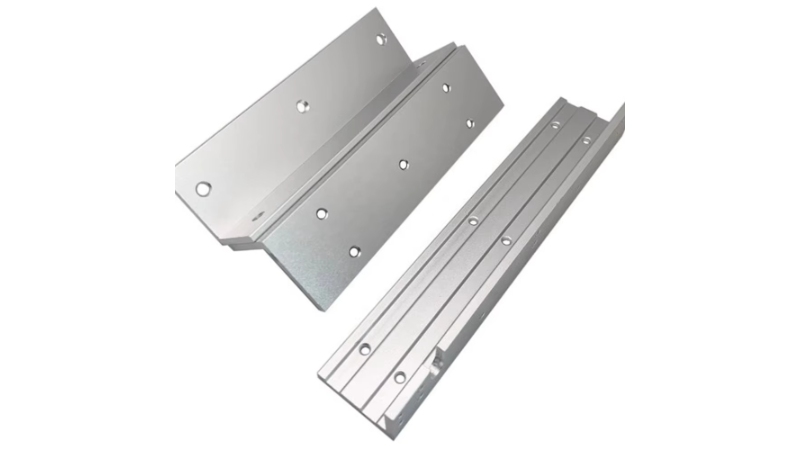
مزايا الفولاذ المقاوم للصدأ الأوستنيتي
يوفر الفولاذ الأوستنيتي المقاوم للصدأ العديد من المزايا. وهذه المزايا تجعلها خيارًا شائعًا في مختلف الصناعات.
المتانة والأداء طويل الأمد
يتفوق الفولاذ الأوستنيتي المقاوم للصدأ في المتانة. فهي تقاوم التآكل في العديد من البيئات، بدءًا من التعرض للغلاف الجوي وحتى المواد الكيميائية القاسية. وتُترجم هذه المقاومة إلى عمر خدمة طويل. وغالباً ما تدوم الهياكل والمعدات المصنوعة من هذا الفولاذ لعقود من الزمن بأقل قدر من التدهور.
سهولة التصنيع وقابلية التشكيل
يتميز هذا الفولاذ بقابليته العالية للتشكيل. يمكن أن تكون عازمة, ممتد، و مرسومة بعمق إلى أشكال معقدة دون تشقق. تسمح قابلية التشكيل هذه بخيارات تصميم متعددة الاستخدامات، مما يسمح للمصنعين بإنشاء أجزاء معقدة ذات تفاوتات ضيقة.
متطلبات الصيانة المنخفضة
وبمجرد تركيبها، يحتاج الفولاذ الأوستنيتي المقاوم للصدأ إلى القليل من الصيانة. حيث تحمي الطبقة السلبية ذاتية الشفاء من التآكل، وفي معظم البيئات، تحافظ على مظهرها دون الحاجة إلى طلاءات أو معالجات خاصة.
مقاومة درجات الحرارة العالية
تحافظ الدرجات الأوستنيتي على قوتها ومقاومتها للتآكل في درجات الحرارة المرتفعة، مما يجعلها مثالية للتطبيقات ذات درجات الحرارة العالية. وتستخدم في الأفران والغلايات وأنظمة العادم. يمكن أن تتحمل بعض الدرجات درجات حرارة تصل إلى 1000 درجة مئوية (1832 درجة فهرنهايت) مع الاحتفاظ بالسلامة الهيكلية.
القيود والتحديات
في حين أن الفولاذ الأوستنيتي المقاوم للصدأ يقدم العديد من المزايا، إلا أن له قيودًا. يساعد فهم هذه التحديات في اختيار المواد المناسبة وتطبيقها.
التحسس والتآكل بين الخلايا الحبيبية
ويحدث ذلك عندما تتكون كربيدات الكروم عند حدود الحبيبات. تستنفد هذه العملية المناطق المحيطة بالكروم، مما يقلل من مقاومة التآكل. يحدث التحسس عادةً في درجة حرارة 425-870 درجة مئوية (800-1600 درجة فهرنهايت). ويمكن أن يؤدي إلى تآكل بين الحبيبات حيث تتآكل المادة على طول حدود الحبيبات. يمكن أن تخفف المعالجة الحرارية المناسبة والدرجات منخفضة الكربون أو المثبتة من هذه المشكلة.
نقاط ضعف التشقق الناتج عن التآكل الإجهادي (SCC)
يحدث التكلس الجليدي المكلس عندما يجتمع إجهاد الشد مع البيئة المسببة للتآكل. ويمكن أن يؤدي ذلك إلى فشل مفاجئ وكارثي. تمثل بيئات الكلوريد مشكلة خاصة بالنسبة لهذا الفولاذ. حتى الكميات الصغيرة من الكلوريدات يمكن أن تؤدي إلى حدوث التكلس الجليدي المجلفن في الظروف المناسبة.
إمكانية تصلب العمل والصعوبات في التصنيع الآلي
تتصلب هذه المواد بسرعة أثناء الشغل على البارد. يمكن أن تزيد هذه الخاصية من القوة، ولكنها أيضًا تجعل التصنيع الآلي أكثر صعوبة. عندما يتم قطع المادة، فإنها تتصلب، مما يؤدي إلى تآكل الأداة وضعف تشطيب السطح. يجب على الماكينات استخدام أدوات حادة وسرعات قطع مناسبة ومواد تبريد للتغلب على هذه التحديات.
الفولاذ الأوستنيتي مقابل الفولاذ الحديدي والمارتنزيتي غير القابل للصدأ
الاختلافات الحرجة في البنية والخصائص
الأوستنيتي:
- غير مغناطيسي
- البنية البلورية المكعبة المتمركزة الوجه
- مرن للغاية وقابل للتشكيل
- لا يمكن تقويتها بالمعالجة الحرارية
حديدي:
- مغناطيسي
- التركيب البلوري المكعب المتمركز حول الجسم
- أقل قابلية للسحب من الأوستنيتي
- لا يمكن تقويتها بالمعالجة الحرارية
مرتنزيتي:
- مغناطيسي
- بنية بلورية رباعية الزوايا متمركزة على الجسم
- الأصعب والأقل مرونة من بين الثلاثة
- يمكن تقويتها بالمعالجة الحرارية
مقارنة مقاومة التآكل
الأوستنيتي:
- مقاومة ممتازة للتآكل بشكل عام
- أفضل أداء في بيئات الكلوريد
- مقاومة فائقة للتنقر والتآكل الشقوق
حديدي:
- مقاومة جيدة للتآكل بشكل عام
- أقل مقاومة للتنقر من الأوستنيتي.
- مقاومة أفضل للتشقق الناتج عن التآكل الإجهادي
مرتنزيتي:
- أقل مقاومة للتآكل من بين الثلاثة
- عرضة للتآكل الناتج عن الحفر والتآكل الشقوق
- يتطلب طلاءات واقية للبيئات المسببة للتآكل
مقارنة القوة والمتانة الميكانيكية
الأوستنيتي:
- قوة خضوع معتدلة
- قوة شد عالية
- صلابة ممتازة في درجات الحرارة المنخفضة
- معدل تصلب العمل العالي
حديدي:
- قوة خضوع وشد معتدلة
- معدل تصلب عمل أقل من الأوستنيتي
- صلابة جيدة، ولكن أقل من الأوستنيتي
مرتنزيتي:
- أعلى مقاومة خضوع وقوة شد
- أقل ليونة وصلابة
- هش في درجات الحرارة المنخفضة
خاتمة
يُعد الفولاذ الأوستنيتي المقاوم للصدأ مادة متعددة الاستخدامات ذات خصائص فريدة من نوعها. فهي توفر مقاومة ممتازة للتآكل وقابلية تشكيل ومتانة ممتازة، مما يجعلها مثالية لمختلف التطبيقات في مختلف الصناعات. وعلى الرغم من أن له بعض القيود، إلا أن الاختيار والتعامل المناسبين يمكن أن يخفف من معظم التحديات.
هل تحتاج إلى مصنع موثوق لأجزاء الصفائح المعدنية؟ شنغن هو المكان المناسب للذهاب. نحن متخصصون في قطع الصفائح المعدنية بالليزر، والثني، وتشطيب الأسطح، والتصنيع باستخدام الحاسب الآلي. تواصل مع شنغن اليوم وطلب المساعدة من المتخصصين!
الأسئلة الشائعة
ما الفرق بين الفولاذ المقاوم للصدأ 304 و316؟
304 و316 كلاهما من الرتبة الأوستنيتي، ولكن 316 يحتوي على الموليبدينوم. تمنح هذه الإضافة 316 مقاومة أفضل للتآكل، خاصةً ضد الكلوريدات. غالبًا ما يستخدم 316 في البيئات الأكثر عدوانية مثل التطبيقات البحرية.
هل يمكن ممغنطة الفولاذ الأوستنيتي المقاوم للصدأ؟
بشكل عام، الفولاذ الأوستنيتي المقاوم للصدأ غير مغناطيسي. ومع ذلك، يمكن أن يؤدي الشغل على البارد إلى بعض المغناطيسية. وتظل الدرجات الأوستنيتي بالكامل غير مغناطيسية حتى بعد الشغل على البارد.
كيف تمنع التآكل في الفولاذ الأوستنيتي المقاوم للصدأ؟
يساعد التصميم السليم واختيار المواد والصيانة المناسبة على منع التآكل. تجنب الشقوق واستخدام درجات مناسبة للبيئة وتنظيف السطح بانتظام. في البيئات القاسية، قد تكون الحماية الكاثودية ضرورية.
هل الفولاذ الأوستنيتي المقاوم للصدأ مناسب للبيئات ذات درجات الحرارة العالية؟
نعم، تعمل العديد من درجات الأوستنيتي بشكل جيد في درجات الحرارة العالية. فهي تحافظ على قوتها ومقاومتها للتآكل بشكل أفضل من أنواع الفولاذ المقاوم للصدأ الأخرى. يمكن لبعض الدرجات تحمل درجات حرارة تصل إلى 1000 درجة مئوية (1832 درجة فهرنهايت).
مهلا، أنا كيفن لي

على مدى السنوات العشر الماضية، كنت منغمسًا في أشكال مختلفة من تصنيع الصفائح المعدنية، وشاركت رؤى رائعة هنا من تجاربي عبر ورش العمل المتنوعة.
ابقى على تواصل

كيفن لي
لدي أكثر من عشر سنوات من الخبرة المهنية في تصنيع الصفائح المعدنية، وتخصصت في القطع بالليزر، والثني، واللحام، وتقنيات معالجة الأسطح. كمدير فني في شنغن، أنا ملتزم بحل تحديات التصنيع المعقدة ودفع الابتكار والجودة في كل مشروع.

